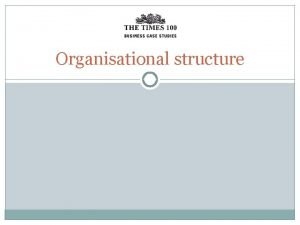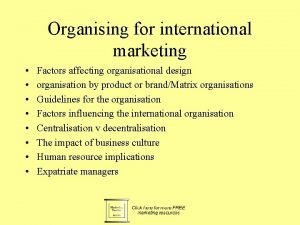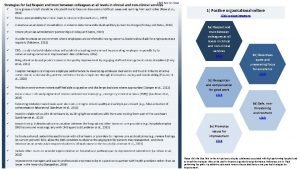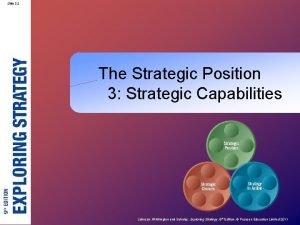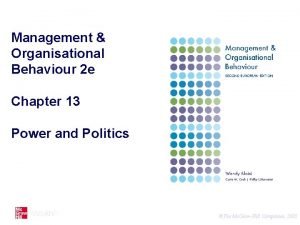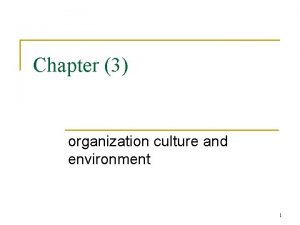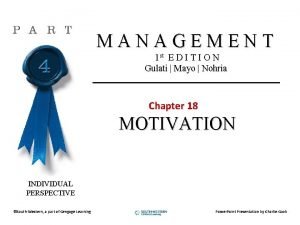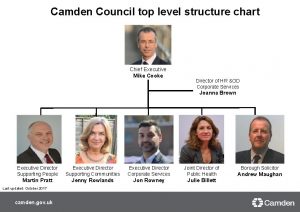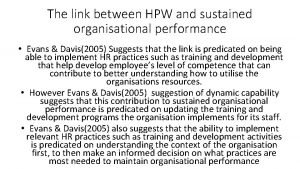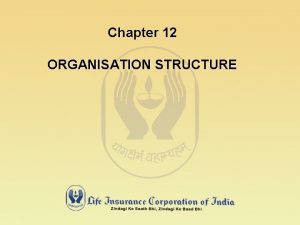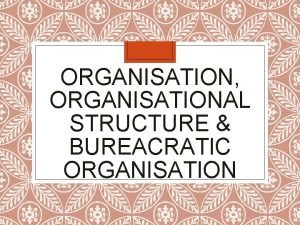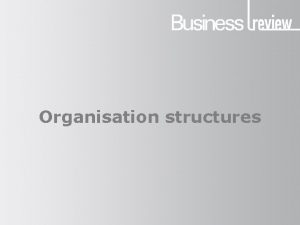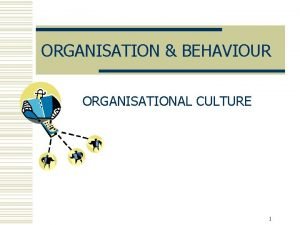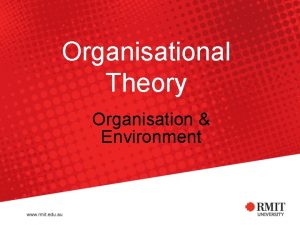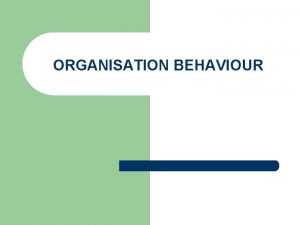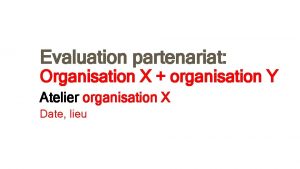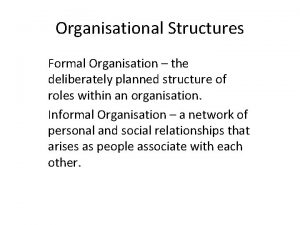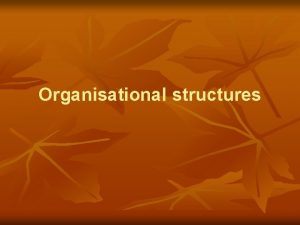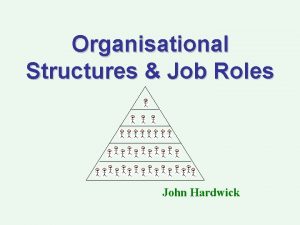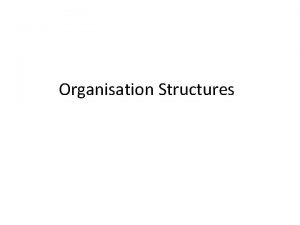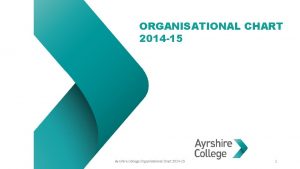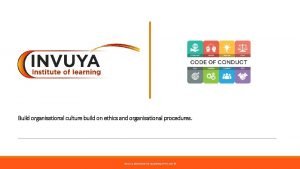Organisational Structures Organisational Structures An organisation consists of

















- Slides: 17

Organisational Structures

Organisational Structures • An organisation consists of a group of people who come together for a common goal or aim. They organise themselves internally to suit the type of activities that the organisation is carrying out. How they do this will depend on factors such as: – Size – Finance available – Products/ services provided – Technology being used/available – Customer groups/ target markets

What does an organisational chart show? Select 4 1. Number of people in the organisation? 2. Responsibilities at different levels in the organisation? 3. Chain of command? 4. Names of key job holders? 5. Span of control of managers? 6. Where work could be delegated to subordinates?

Which is the best definition? • Responsibility 1. Being the main decision-maker in the organisation 2. Being answerable for decisions and actions taken within the organisation • Chain of command 1. This show communication flows up and down the organisation 2. This shows who the main commander within the organisation is

Which is the best definition? • Authority 1. Having the power to make decisions 2. Being able to tell others what to do and how to do it • Delegation 1. Giving work that you don’t want to do, to other people 2. Giving authority and responsibility to someone else to carry out a specific task

How do organisations group their activities? Consider the following: • An organisation has 5 departments: • • • Operations Finance Human Resources Marketing Research and development • The heads of each department report to a Managing Director. • How are the activities in this organisation grouped?

How do organisations group their activities? Consider the following: • An organisation has 4 different departments: • • Furniture Food and Drink Clothing Soft Furnishing • The Head of each department reports to a General Manager. • How are the activities in this organisation grouped?

How do organisations group their activities? Consider the following: • An organisation has 4 different departments: • • Asia Europe North America South America • The Manager of each department reports to the CEO of the business. • How are the activities in this organisation grouped?

How do organisations group their activities? Consider the following: • An organisation has 3 different departments: • Fine Dining Restaurant • Bar and Grill • Family Friendly Eatery • The Manager of each department reports to the CEO of the business. • How are the activities in this organisation grouped?

Take one of the Groupings which you have identified (in the previous 4 slides) and explain the pros and cons of that approach:

Define span of control

Identify two benefits of a narrow span of control and two benefits of a wide span of control: • Wide span of control • Narrow span of control

Tall and flat structures – which is which? • Highlight the correct information for each type of hierarchy • Tall structure • • Many levels of management Quick communication up and down the structure Long chain of command Management salaries do not cost very much • Flat structure • • Many levels of management Quick communication up and down the structure Long chain of command Management salaries do not cost very much

Compare the main features of centralised and decentralised structures:

What is delayering and why might an organisation choose to do this?

Identify 3 benefits of a Matrix or Project structure

Typical exam questions – try these for revision • Describe the method of grouping used in ABC company • Describe the following terms: • Chain of command • Delegation • Wide span of control • Compare method of grouping A with method of grouping B • Compare tall and flat organisation structures • Discuss the main features of organisational structure X (organisational chart is shown)
 Internal organisational structures
Internal organisational structures Function of homologous structure
Function of homologous structure Anu organisational chart
Anu organisational chart Ecb organisational chart
Ecb organisational chart Equity theory of motivation
Equity theory of motivation Factors affecting organisational design
Factors affecting organisational design How to improve organisational performance
How to improve organisational performance Organisational stress
Organisational stress Organisational capabilities
Organisational capabilities Power in organisational behaviour
Power in organisational behaviour Strong and weak organisational culture
Strong and weak organisational culture Techniques for managing organisational relationship
Techniques for managing organisational relationship Reinforcement theory of motivation
Reinforcement theory of motivation Health education england organisational structure
Health education england organisational structure Camden council organisational structure
Camden council organisational structure Reasons for changing organisational culture
Reasons for changing organisational culture Link between hpw and sustained organisation performance
Link between hpw and sustained organisation performance Lic organisational structure
Lic organisational structure
